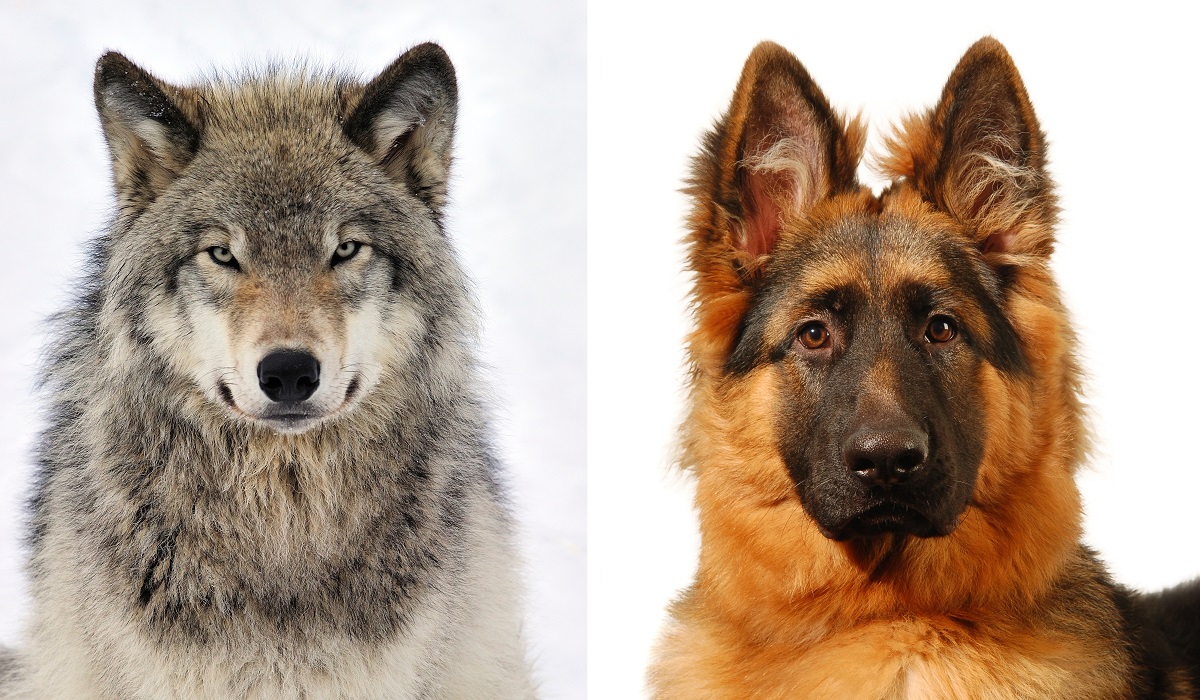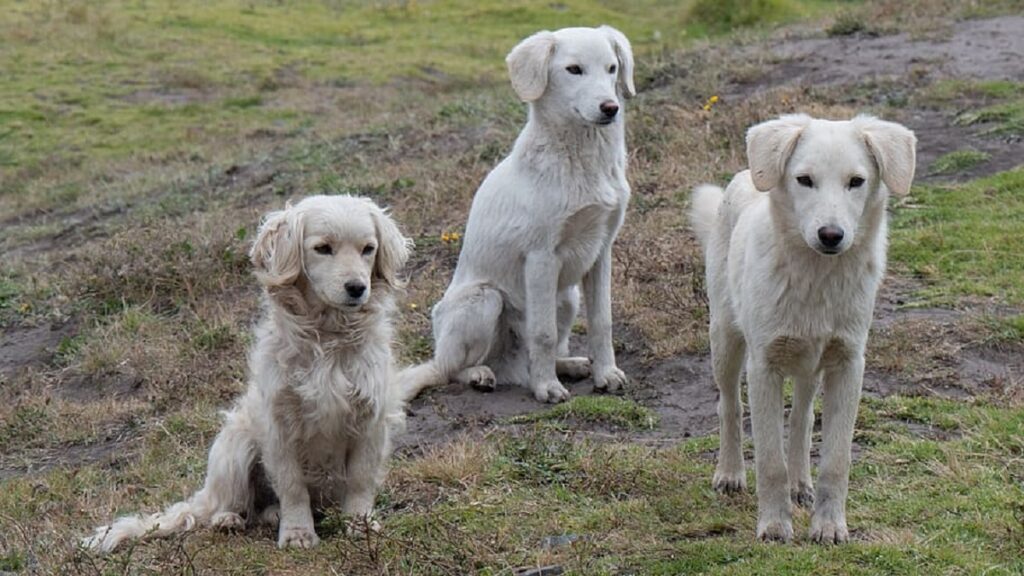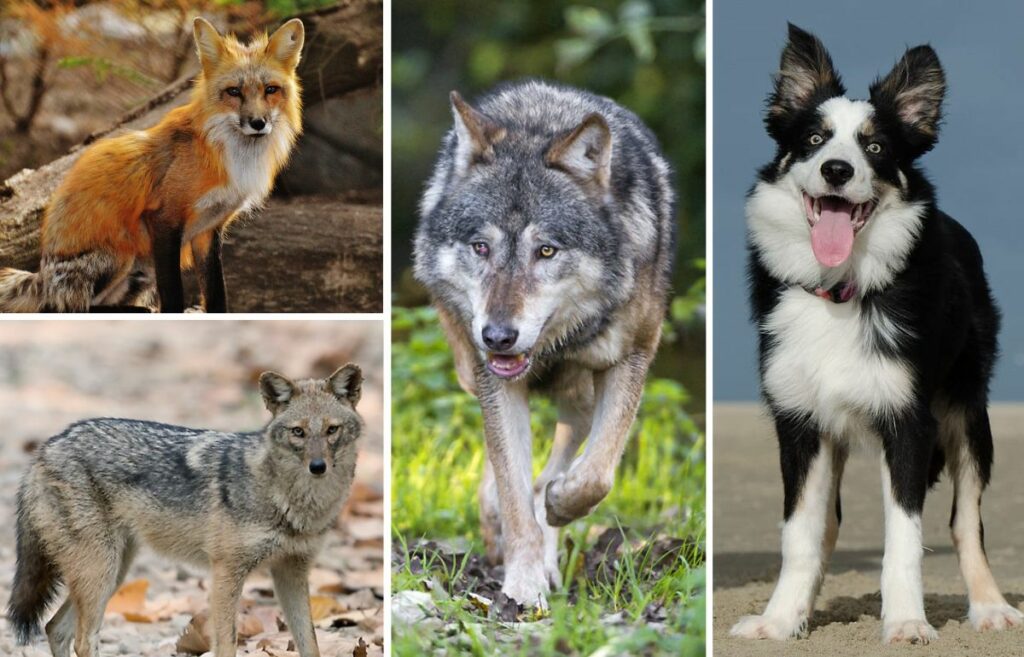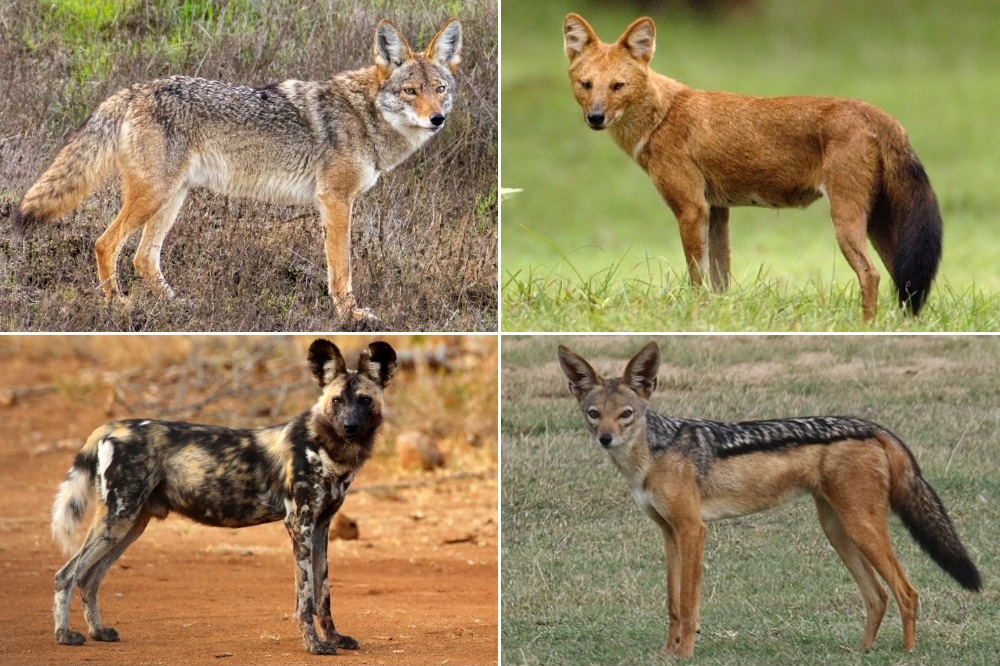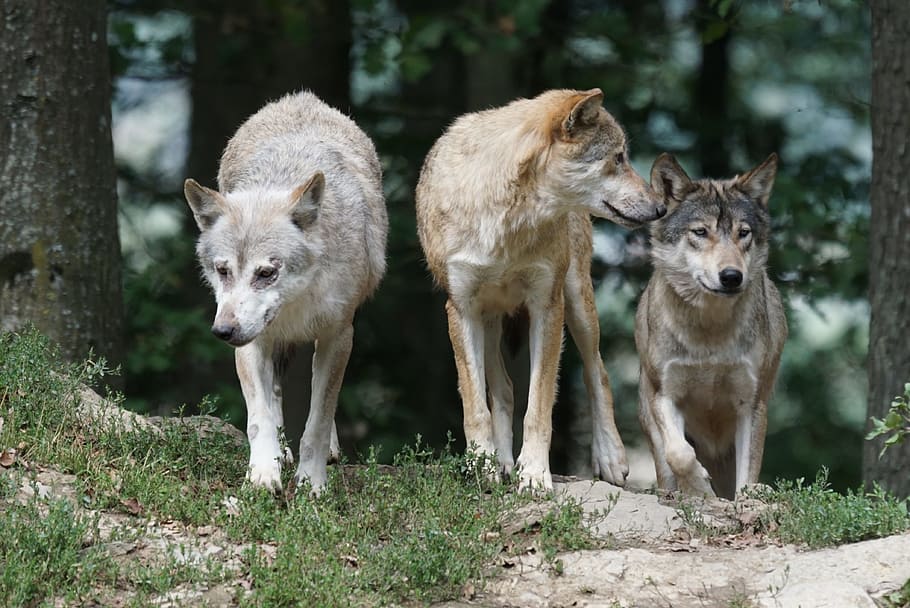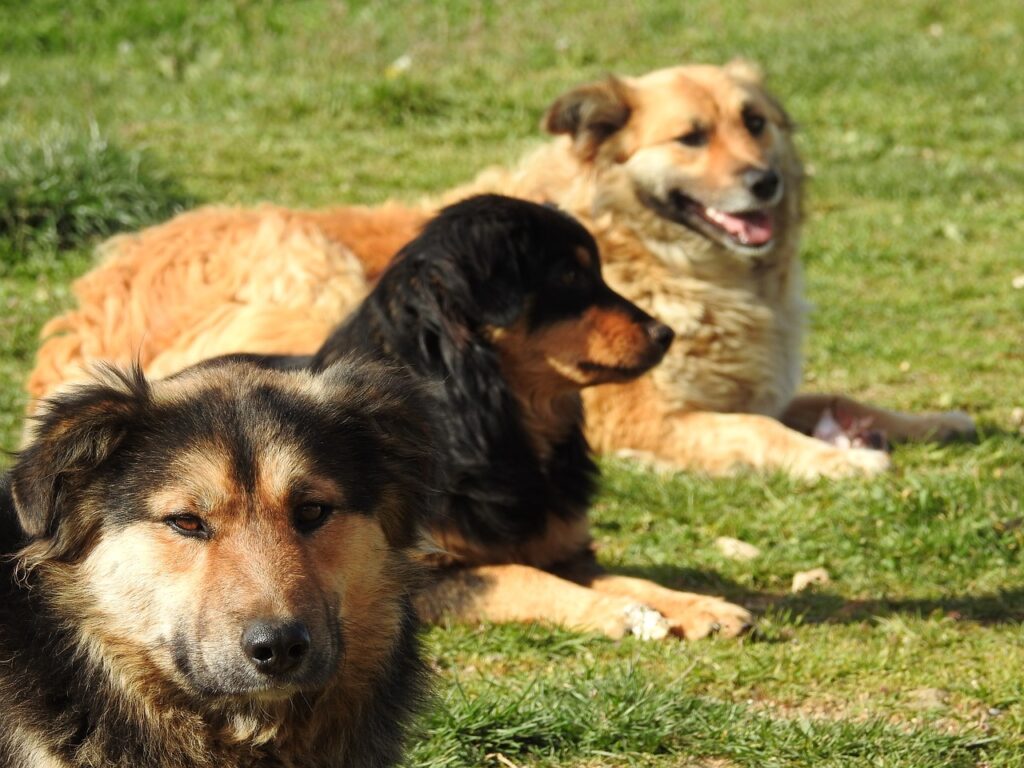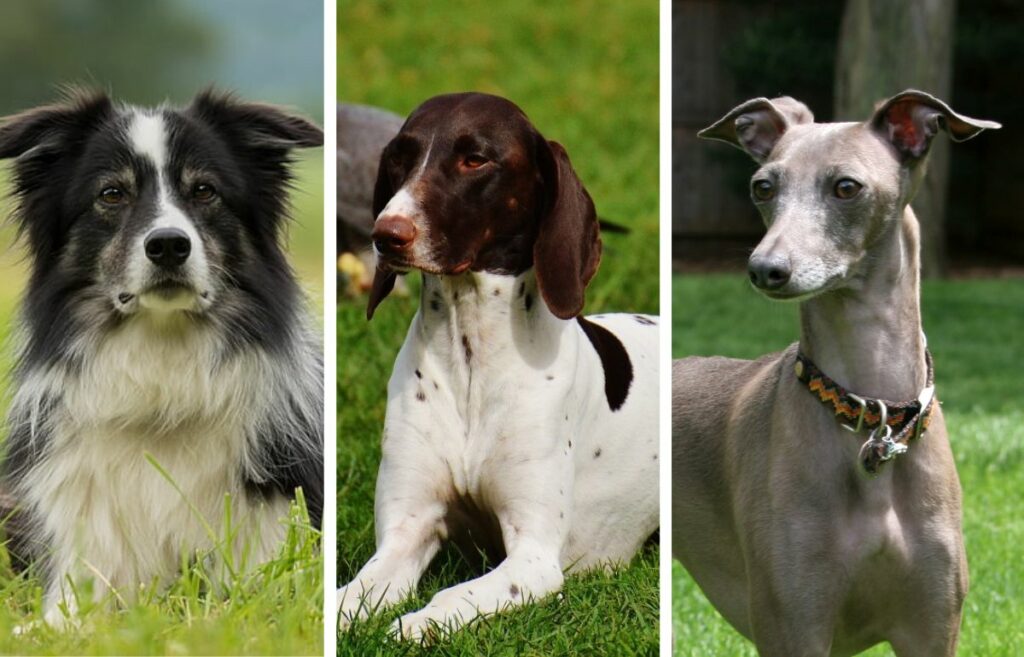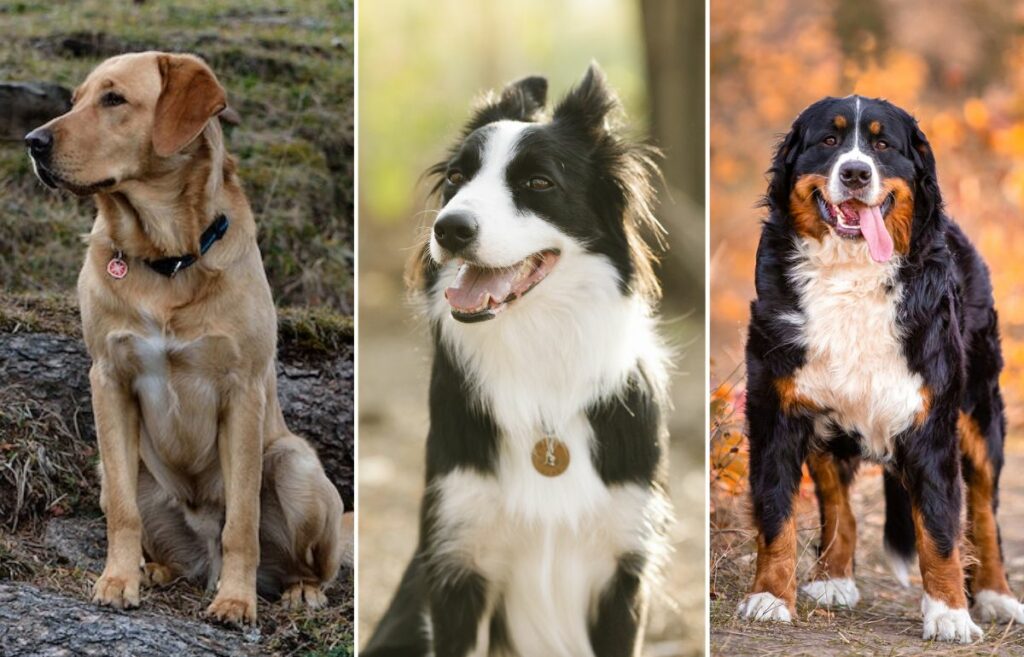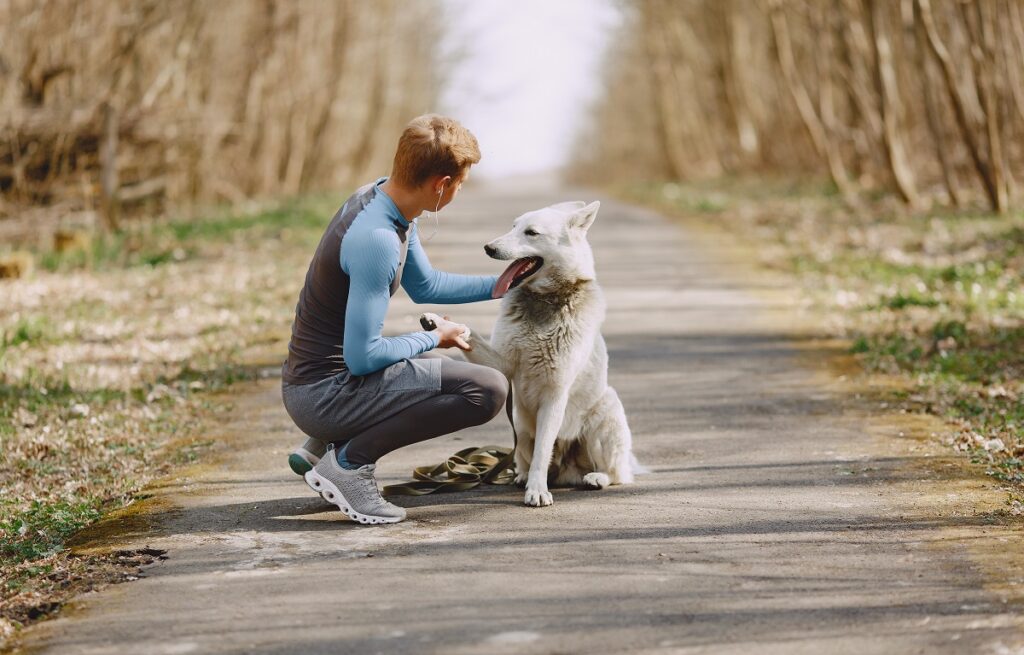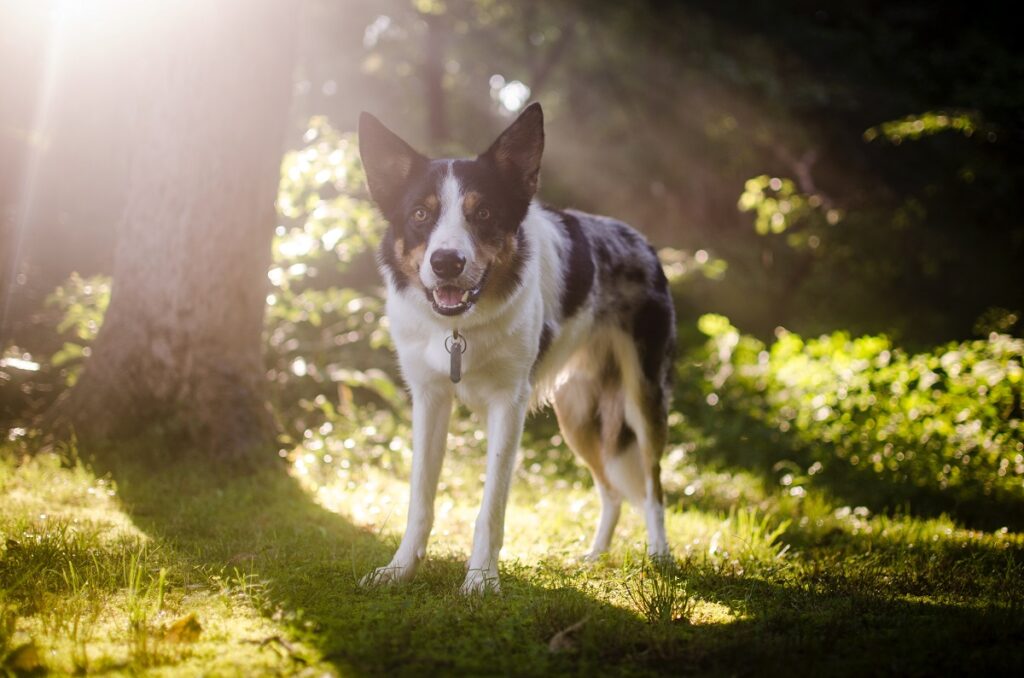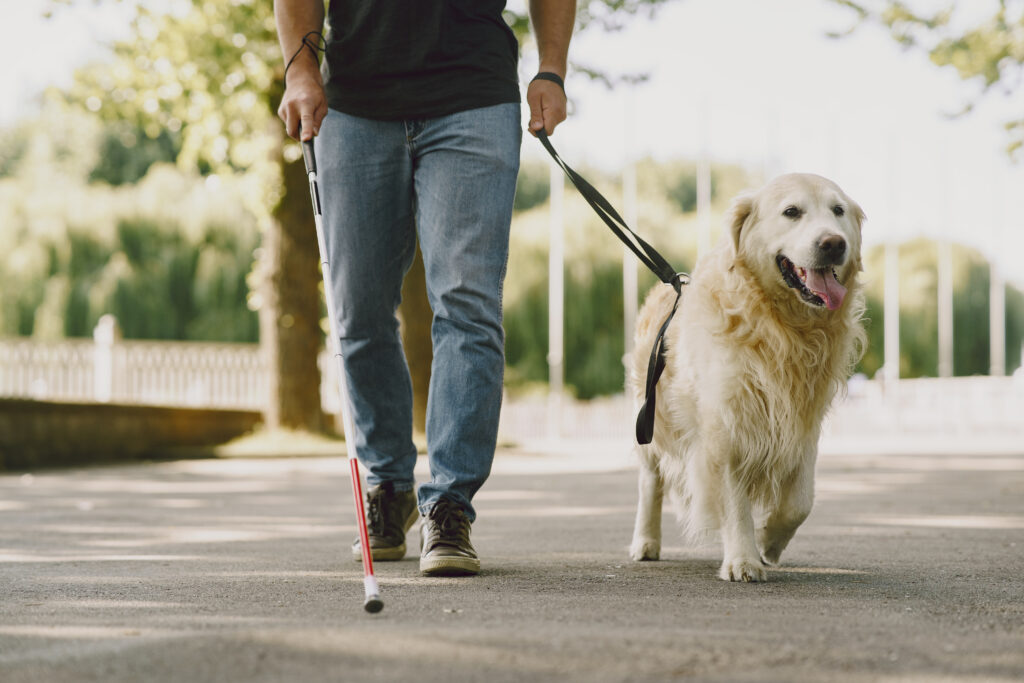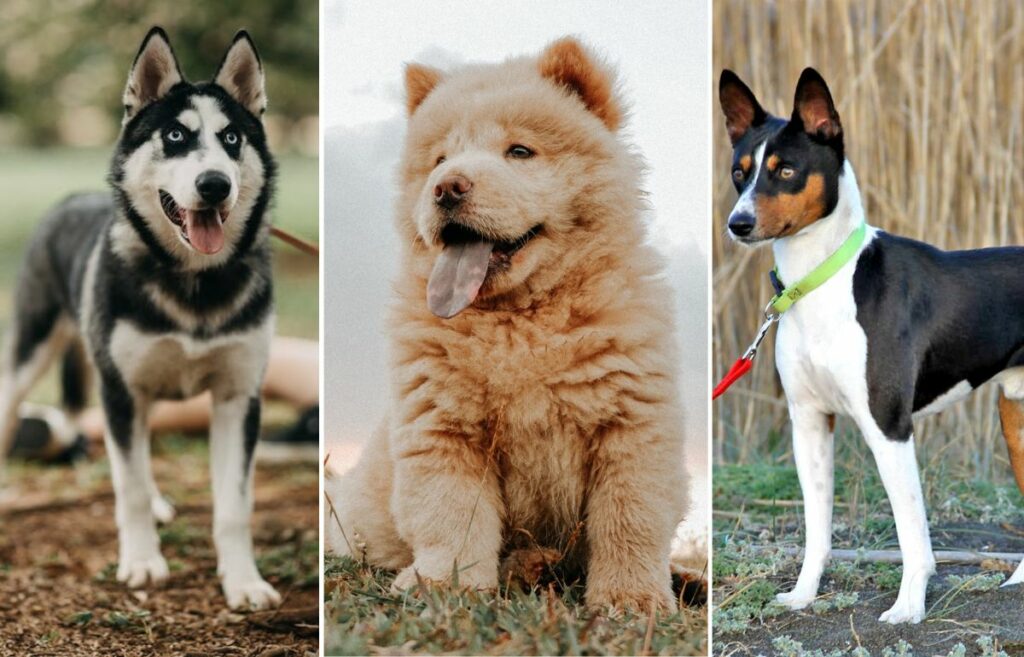From the wild heart of the wolf to the comforting presence at our feet, the domestication of dogs represents one of humanity’s most profound interspecies relationships. This journey, spanning millennia, transformed a formidable predator into our most loyal companion. How did this remarkable transformation unfold? Explore the fascinating scientific and historical evidence that reveals the complex interplay of natural and artificial selection, revealing not only the origins of our canine friends, but also shedding light on our own human story.
The Subspecies of Canis lupus familiaris… The Family of Canidae… The Order of Carnivora… Or simply put… dogs! The scientific name for them should be ‘Canine fabulosa’ since they’re the most popular domestic animal in the world. (Well. We can’t forget felines, but that’s another article.)
The domestication of dogs has long been researched by scientists, archeologists, and paleontologists, and many have come to the crossroads that exist to this day.
So what do we know for sure? In Latin –
- canis = dog
- lupus = wolf
- familiaris = domestic
Have you ever wondered how our 4-legged best friends came to be our beloved family members? We have done the legwork and are excited to share everything we know about the domestication of dogs.
We’ve obtained information from the dog’s mouth so you can be sure of its validity. Now let’s delve into how canines worked their way into our hearts.
Dog Evolution
Bring fifteen dog experts into a conversation about dog domestication, and you’ll get fifteen differing opinions. But the good news is that due to fossils, dog genomes (DNA), wolf DNA, ancestral proof, and the like, we have some agreeable ground to stand on, which we’ll get to later.
Dogs are companion animals. They need company, human, and canine, and don’t flourish well on their own. How and when dogs became companion animals are the questions that seem to confuse experts the most. However, there could be a bit of truth in every theory.
We do know that canines were the first animals to be domesticized, so before cattle and goats were being herded, and chickens were cooped, dogs were on the scene as faithful friends.
Although dogs did descend from wolves, it likely wasn’t the gray wolf but a previous species of wolf that is now extinct and unknown – One from Eurasia (Europe and Asia). Dogs and gray wolves are sister taxa or closely related.
It’s why they resemble each other and have many of the same innate behaviors. Of course, the rampant cross-breeding as well as inbreeding of dogs and wolves over centuries sealed the deal.
Let’s dig deeper into dogs, wolves, and humans. By the time we’re finished, you’ll know what could have happened, what may have happened, and what did happen.
Timeline and Origin of Genetic Divergence
There is confusion and guesstimations over this topic for several reasons. A major one is dog and wolf fossils are extremely similar, and it takes expertise and time to decipher which is which.
There are dogs that look like wolves and wolves that look like dogs. Add to that wolf-dog and dog-wolf species, and you have a smorgasbord of possibilities.
When dogs separated from wolves, they underwent a morphological transition, a metamorphosis if you will, where their features began to change, which included developing:
- Shorter and wider snouts
- Smaller stature
- Wider orbital (around the eyes) angles
- Shorter carnassials (cheek teeth)
This didn’t happen overnight but over many thousands of years.
And where exactly did they evolve from? According to the National History Magazine of 1939, dogs evolved from the now-extinct Miacis (pronounced “MY-uh-sis” in America) all the way to the wolf.
Timeline and Origin of the Dog
From ancient beginnings to cherished family members, explore the remarkable evolution of dogs:
Ancestors of animals known today as canids (dogs, wolves, jackals, foxes):
- Miacis (Lived 60 million years ago)
Small mammal that resembled a weasel
- Cynodictis (30-40 million years ago)
Medium-sized with a long tail and a fur coat
- Tomarctus (15 million years ago)
Carnivorous and canine-like that lived in North America
- Wolf(1 million years ago)
Where Do Dogs Come From
All dogs share 98.8 percent of their DNA with wolves. They are direct descendants.
(Foxes, wolves, jackals, the African wild dog, and dingos — all wild animals — are also members of the dog family or ‘Canidae.’)
The National Library of Medicine, the world’s largest biomedical library, has also had its hands in the “Where do dogs come from” issue. They performed a study from a selection of dogs worldwide, and the results were that the domestic dog originated from southern East Asia. More specifically, that dog and wolf populations diverged 33,000 years ago.
Archeological evidence of dogs across Eurasia corresponds with the global spread of dogs 15,000 years ago. This study did not discover how domestic dogs migrated from southern East Asia to the Middle East, Africa, and Europe.
They then went further to study whether the domestic dog originated in more than one region through separate events. The results showed that since there were few samples from the Indian coastal region, northern Eurasia, and Africa, there were still lots of questions regarding migration patterns and who went where and when.
Important: This is only one of many studies conducted on the evolution of domesticated dog species. There is much more information that has yet to be uncovered.
How Did Wolves Become Dogs
The scientific name for wolves is ‘Canis lupus’ unlike the dog’s which is ‘Canis lupus familiaris.’
Most scientists believe that dogs were domesticized over the course of thousands of years when they became increasingly tamer from interacting with early humans.
Divergence Based on Morphology
Science Direct reports:
An explanation for the ubiquitous morphological changes during the evolutionary divergence of the domestic dog (Canis familiaris) from the wolf (Canis lupus) has proven elusive. These changes include size reduction, facial shortening, and tooth crowding.
In English, this is saying that dogs definitely have these differing characteristics (head, teeth, and body shape) from modern wolves, but beyond “evolutionary reasons,” there’s no conclusive evidence as to how it happened.
Dog Domestication
Witness the incredible tale of dog domestication, a journey that transformed wolves into loyal companions and shaped the human-canine bond that continues to thrive today.
History of Domesticated Dogs
Dogs and wolves are two of the few species that can mate (Another example: Horses and donkeys) and produce viable offspring. Important to know when wading through everything.
The domestication process is somewhat of a mystery. There is no exact date and time of how, when, and where dogs separated from their wild ancestors, but early domestication has been basically agreed upon to be around 40,000 years ago, with certain domestication being some 14,000 years ago.
But let’s talk facts. We know that gene flow between dogs and wild wolves was influential in making canines what they are today. From ancient DNA evidence and genetic studies, it has been discovered that five types of dogs had evolved by the Bronze Age (4500 BC) and by the end of the Ice Age (11,500 years ago).
- Greyhound-types
- Wolf-types
- Mastiffs
- Herding dogs
- Pointing dogs
In 2016, a research team published evidence citing two places of origin for domestic dogs: Eastern Eurasia and Western Eurasia. It stated that 12,500 years ago, Asian dogs originated from Asian wolves. Additionally, it reports that European Paleolithic dogs (from European hunting camps over 30,000 years ago) originated from European wolves.
Then, says the report, sometime before the Neolithic period (at least 6,400 years ago), humans transported Asian dogs to Europe.
A burial site in Germany is where human and dog interments were found together 14,000 years ago. This is known as the earliest confirmed domestic dog. It also tells us that early dogs were so intertwined with people that some chose to be buried with them.
Dog Domestication Theories
The conversations around dog domestication are generally tricky, murky, and arguable.
All of the reputable and trustworthy organizations from which I pulled research had differing opinions on this subject. All plausible, yet some contradictory. Each of the following hypotheses or facts has been floated by brilliant minds, but if and how they line up rattles researchers to this day:
- The mutation rates are the primary factor with domestication.
- 15,000-year-old dog fossils were found in Western Europe, 12,500-year-old ones in East Asia
- There was a single domestication of the dog in Central Asia.
- Dogs are direct descendants of the grey wolf.
- They originated in southern China, and then a subset of them migrated.
- Dogs were domesticated somewhere in Europe or western Siberia.
- They were domesticated in the Middle East and Africa.
- Farmers domesticated them by actively trapping and training wolves.
- Wolves domesticated themselves, beginning with eating human scraps and eventually approaching human beings.
- Dogs were domesticated twice in two different areas.
- Dogs were domesticated 130,000 years ago.
- Dogs came to the Americas only some 10,000 years ago.
This isn’t all of the dog domestication conversations that reverberate around the globe. Even Darwin himself said that domestic dogs ‘descended from several wild species.’
The one thing everyone agrees on is that every dog breed – from the proud Chihuahua to the massive English Mastiff – originated from wolves. And that’s no small fact. I’ll drink to that.
Origin of Breeds
Many modern dog breeds were “created” in the last 200 years. Humans likely started breeding dogs for a specific purpose:
- Retrievers to retrieve
- Greyhounds and terriers to hunt
- Border collies to herd
- Dalmatians as carriage dogs
- Giant schnauzers and cane corsos to protect
- Bernese mountain dogs to cart/deliver things
- Alaskan malamutes as sled pullers
And on it goes.
Globally, there are around 400 unique dog breeds. The American Kennel Club (AKC), in America, recognizes 200 breeds.
Each breed’s ideal physical traits, movement, and temperament are set down in a written document called a “breed standard.” – American Kennel Club
Why were Dogs Domesticated
Let’s explore the fascinating reasons behind canine domestication, a journey driven by mutual benefits, companionship, and the unique abilities that forever intertwined the destinies of humans and canines.
Socialization
Feelings of loneliness have plagued humans since the beginning of time. But at the beginning of the dog/human relationship, dogs were used for their meat and fur and served practical purposes when times were tough.
They initially stayed close to farmers, traders, and the like for food and shelter. The more dogs were tamed or domesticated; their nature began to show. Eventually, their socialization skills developed and grew to be so strong they could even befriend other species.
Wolves are different. When wolf pups and puppy dogs enter the world, their existence diverges almost immediately in the way they smell, see, and hear. These developmental differences put wolf and dog pups worlds apart in terms of their ability to socialize with humans.
Path of Commensalism
Long before domestication, there was a commensal relationship between dogs and humans.
- Commensalism – an association between two organisms in which one benefits and the other derives neither benefit nor harm. – Oxford Dictionary
Before there were even agricultural practices, DNA evidence shows dogs accompanied humans as they hunted in order to be scavengers. So humans hunted, gathered what they needed, and dogs cleaned up the leftovers. Dogs got food, and humans were neither harmed nor benefited from what transpired.
Have you ever seen an egret on the back of a cow? Since the egret is scouring for insects while the cow is being, well – a cow, it’s a perfect example of commensalism.
The relationship between humans and dogs turned mutualistic (when two organisms of different species “work together,” each benefiting from the relationship) when dogs started to become domesticated.
Changes in Genetics
Another age-old issue that has had geneticists’ ears continually perked up is how ALL breeds of dogs are dog species, even though one can look like a boxer and another like a husky. After all, horses generally look like other horses, and pigs like pigs, so how could this be?
From studying the canine genome and ancient dogs, scientists have learned that minuscule genetic changes can produce huge variations between one species. And dog breeders have been making these changes for centuries.
Domestication happens through selective breeding. Desirable traits are chosen and eventually passed to future generations. Domestication syndrome is a fancy word for a condition that leads to changes in canine coloration and brain and body size reductions.
Coevolution of Humans and Dogs
The coevolutionary tale of humans and dogs is an extraordinary partnership forged by nature’s design, shared histories, and the deep bond that continues to shape both species’ destinies.
How Dogs Have Become Man’s Best Friends
I can’t begin to imagine a life without dogs. They’ve comforted, taught, and protected me in ways nothing else ever could. No other animal comes close to filling the paws of dogs and their place alongside human beings.
Dogs and humans have had a connection for as far back as time has been recorded and quite possibly since the beginning of time. We have evolved together. It’s a wonder humans aren’t sniffing each other when they meet.
Throughout 40,000 years, numerous variables affected the look and behavior of dogs:
- Environment
- Diet
- Training
- Breeding (Proper and improper)
- Exercise
- Prey and predators
To name a few. Some of these have affected the evolution of humans, too.
Hunter-gatherers have existed since time began, and fossil depictions of the ancient man with a canine by his side communicate the importance of dogs.
Humans began seeing them more as companions as time went by, and today you can see them alongside man in just about any situation.
Since dogs have been and are trained to do so many jobs that benefit humans, an unbreakable bond has formed between the two species. Today, although modern dogs may not do some of the same things humans asked of them in the past, their roles have become more diverse, which has only sealed the human/dog relationship even more.
Because of this, the dog population has grown exponentially and has sent dog guardianship into the stratosphere. American dogs can even be seen flying on planes and going through drive-thrus for their favorite snack.
The domestic relationship between dogs and humans has no end in sight.
Characteristics of Dogs
We know dog personalities, shapes, sizes, colors, and even temperaments vary based on breed, but there are many commonalities between them.
- The dog evolved from the wolf.
- Dogs were the first domesticated species.
- They have lived with human beings for at least 14,000 years as companions.
- Dogs have been trained by humans to fulfill distinct societal needs.
- The first dogs were hunters with spot-on senses of smell.
- They have been repeatedly and consistently bred for certain purposes.
- Dogs were considered to be sacred in ancient Egypt. Alongside human remains, dog statues, relics, and ancient dog remains adorn many tombs there.
- Paleolithic dogs more resembled the look of wolf ancestors.
- They’re mammals that bear live young.
- They walk on their toes (digitigradic).
- Their dental structures are similar.
- They have body hair and are homeothermic, or they maintain a fairly constant body temperature.
- They have 78 chromosomes or 39 pairs (compared to our 46 chromosomes or 23 pairs).
- Dogs and wolves are omnivores. They eat both plant and animal food sources.
Although there are many more, let’s move on to the roles they play in society.
Role of Dogs in Human Society
Dogs save us time, money, and stress and have numerous roles in human societies. Here’s a list of how they help human beings:
- Companions
- Hunting partners
- Livestock herders
- Prey retrievers
- Pull loads
- Provide protection
- Provide comfort as ESAs (Emotional Support Animals)
- Provide services for the disabled (Deaf, blind, mentally-affected, neurologically-affected, etc.)
- Police work (Bomb, drug, cadaver, and living people sniffing, etc.)
- Military assistants
- Disease/Disorder detectors (Cancer, epilepsy, anxiety, migraines, low blood sugar, etc.)
- Therapists (Provide love and affection to those in hospitals, schools, nursing homes, etc.)
List of First Domesticated Dogs
- Greenland sled dog
- Basenji
- Siberian husky
- Alaskan malamute
- Greyhound
- Saluki
- Akita Inu
- Xoloitzcuintli
- Samoyed
- Afghan hound
- Chinese Shar Pei
- Chow Chow
These dogs have all been proven to be some of the oldest existing dogs and, as such, are the first to have been domesticated. (But can you pronounce ‘Xoloitzcuintli?’)
FAQs
Is a Wolf a Dog?
Wolves are dog-LIKE and are also canids (canines), making them members of the dog family but not technically dogs. To compare, dogs are wolf-like dogs/canids. They are domesticated, highly evolutionized wolves.
Are Dogs Descendants of Wolves?
Yes, ancient and modern dogs are direct descendants of wolves.
What Was the First Dog on Earth?
The Greenland Sled Dog (that has existed for 9,500 years) is definitely one of the oldest dog breeds, and you’d be hard-pressed to find an older one. It was discovered by a dog genome from an archeological site on Zhokhov Island in Russia.
What Did the First Dog Look Like?
The Greenland sled dog looks similar to the Canadian Eskimo sled dog but is lighter weight-wise and taller. Its tail curls up over its back. They are also similar to the Siberian husky and the Alaskan malamute.
Were Dogs the First Domesticated Animal?
Yes, dogs were the first domesticated animal.
Where Were Dogs First Domesticated?
It’s debatable, but there is strong genetic evidence ancient canids were first domesticated in northern Eurasia.
What Is the Scientific Name for a Dog?
The scientific name for a dog is Canis lupus familiaris.
Are Dogs Mammals?
Yes, dogs are mammals.
When did Dogs Become Pets?
Dogs became pets/domesticated 40,000-14,000 years ago, with 14,000 being the time when they were highly domesticated.
Final Thought
If you’ve ever gazed into the eyes of a dog and felt the love that is there, you know just how much they mean to mankind. Nothing can compare with their loyalty and devotion.
Dogs are entrenched in our societies. They have been by our side for so long that we call them our “child” and “best friend.”
How did we ever live without them? Breed dogs, strays, or rescues; they just get better from generation to generation. And whether they’re “teacups” or “giants,” they’re all the same… absolutely perfect!
The domestication of dogs, a journey spanning millennia, transformed wolves into our beloved canine companions. From shared hunting grounds to cozy couches, this unique interspecies partnership reshaped both wolf and human evolution. Selective pressures, whether intentional or unintentional, sculpted physical and behavioral traits, leading to the astonishing diversity we see in dog breeds today. While the precise timeline and location remain debated, the enduring bond between human and dog stands as a testament to the power of co-evolution and the profound impact animals can have on our lives. Further research continues to unravel the complexities of this remarkable relationship, offering deeper insights into both species.

